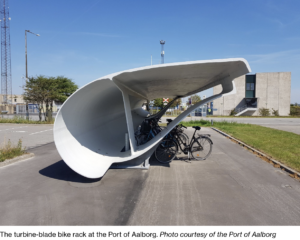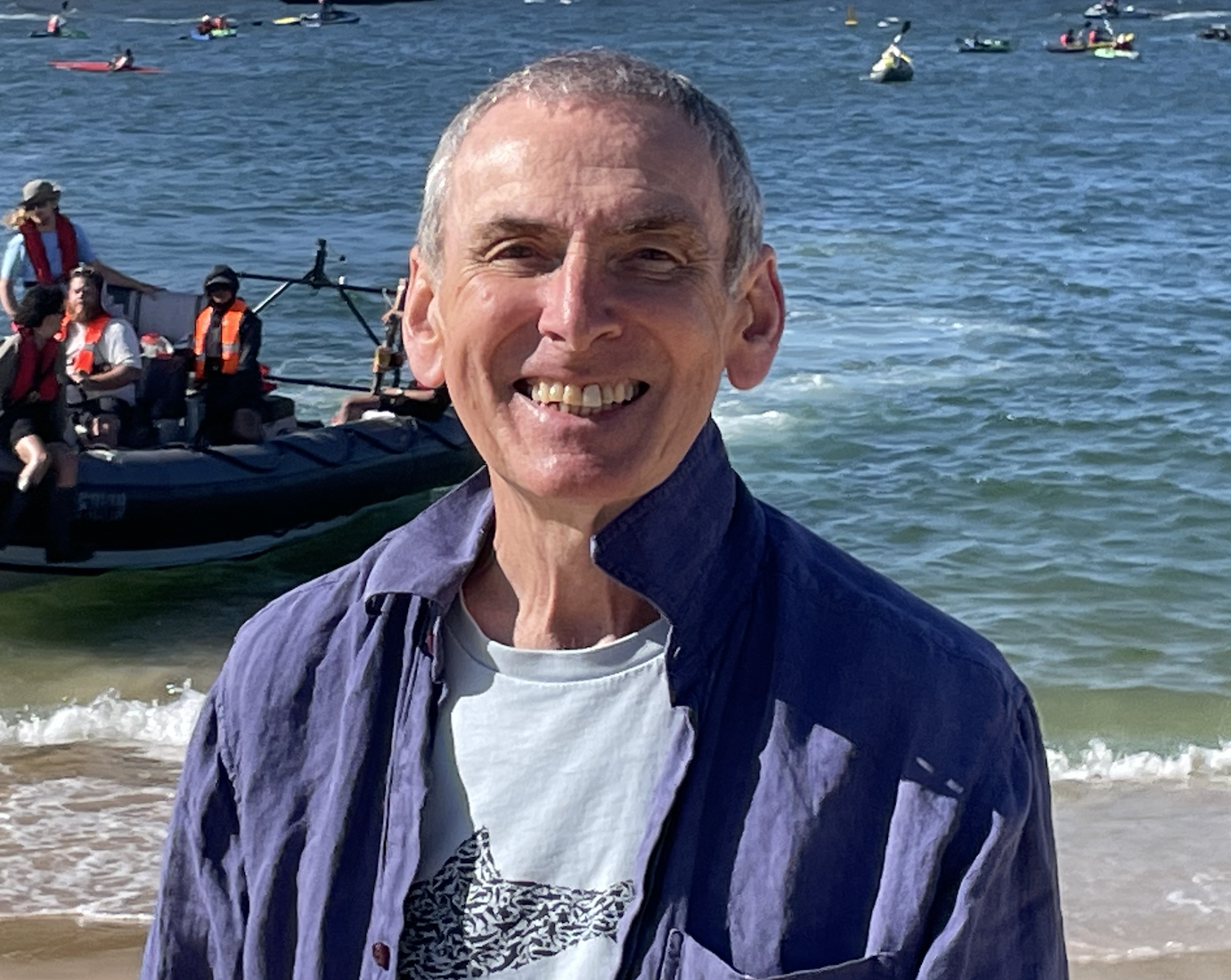Environment: Canadians and Sydney-siders destroying their trees
January 28, 2024
Canadians are destroying their boreal forests. Kelp forests need help worldwide. Advice for Australian company directors on preparing for climate change. New uses for old wind turbine blades.
I thought I’d finalised my first column for 2024; it was going to open with the next two tree-related stories. However, an article in last Saturday’s Sydney Morning Herald is so shocking that I have to lead with it. The article highlights instances of extremely concerning behaviour by the state government-owned Forestry Corporation NSW, two employees of a forestry corporation contractor and NSW Police, including the riot squad. I strongly recommend reading the story and watching the enclosed video. I’m sure that you will be appalled at the behaviour we can now expect from public servants and people contracted by the government.
It’s disgraceful that freedom of speech, the right to peaceful protest, confidence in the administration of the law and safety within one’s own property are being threatened so seriously by governments themselves all across Australia, not just NSW.
Loggers destroy Canada’s boreal forests
From this:
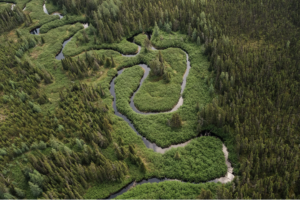
… to this:
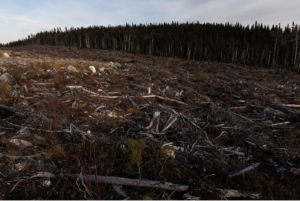
An Australian study has documented the destruction by logging of 14 million hectares (equivalent to Queensland without Cape York) of mainly evergreen boreal forests in the Canadian provinces of Ontario and Quebec since 1976. Annual clearance rates increased between the mid-1980s and the Global Financial Crisis of 2008, since when rates have halved.
The ecological consequences include a loss of diversity of tree age accompanied by an expansion of early-successional and young trees (particularly in older forests) and the creation of a patchwork of isolated stands of trees that are less able to support wildlife (woodland caribou populations are particularly affected) and are more susceptible to fires.
Although Canadian loggers are required to replant areas destroyed or demonstrate that the forest will regenerate naturally, Professor Brendan Mackey, the study’s lead author, emphasised that younger forests are ecologically compromised, hold less carbon, are more vulnerable to disease and insect infestations, make hunting easier and provide poor habitats for many animals and plants that depend on old forests to thrive and even survive.
The study authors recommend greater protection and restoration of older forests, setting aside large, older forest areas as caribou habitat, and, where logging continues, less short-rotation clearcutting to increase the prevalence of larger, older forest patches.
Public attention tends to focus on tropical forests, but worldwide the trees and soil of boreal forests contain about twice as much carbon as their more glamorous tropical cousins.
Sydney’s middle-class vandals
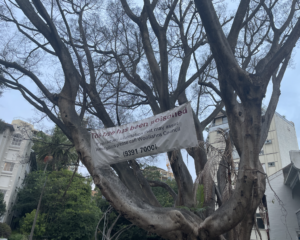
Mind you, Canada isn’t alone in the wanton destruction of its trees.
Just before Christmas, I was walking along a street in Sydney’s affluent Eastern Suburbs when I noticed that the ground under my feet was carpeted in green leaves, more of which were descending on me like a heavy snowfall from a large fig tree. At that point there were still lots of leaves left on the sick tree but a few days later it was completely bare and the sign above had been affixed to it by the local council. A week or two later another tree further along the road suffered the same fate.
It’s likely that the trees in question were blocking some residents’ harbour views and were poisoned with the injection of a glyphosate solution into multiple holes drilled around the base of the tree. The holes were then plugged to keep the poison in situ. The picture below shows three of about 70 plugged holes that I counted around the trunk of the tree above.
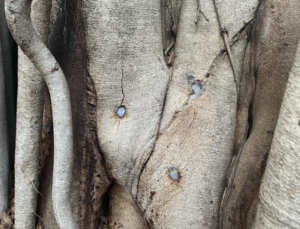
I’ve helped with an identical process to kill invasive weeping willows on the banks of the Murrumbidgee and I can tell you that it would have taken quite a while to poison these urban dwellers, particularly if the perpetrators took the safety precautions required for handling glyphosate.
My suggestion is that the local council should commission some massive trompe l’oeil fabric hoardings (like the ones they use on the façade of a heritage building when it is being restored) and drape them over a poisoned tree’s bare branches. But instead of the picture on the fabric looking like the original tree in full leaf, it would look like a refuse tip or a plastic-strewn beach or some such. That would provide a nice view from the poisoner’s balcony.
Climate action guidance for Australian company directors
CSIRO and the Australian Institute of Company Directors (AICD) have produced a 9-page ‘Climate Change - Science Snapshot’ for company directors. The Snapshot covers important climate change concepts, an overview of Australia’s changing climate, the outlook for societies and businesses globally, and the increasing risks for Australian industries as the climate gets hotter - for instance the impacts on coral reefs, kelp forests, coastal areas, alpine areas, agricultural production, cities and infrastructure, and human health. Spoiler alert: the lowest levels of risk that are identified are ‘Moderate’ and two-thirds are rated ‘Very High’.
CSIRO and AICD have pulled no punches and have laid out some simple facts for any company directors still harbouring climate denial tendencies (we know you’re out there):
- The human influence on the climate system is unequivocal.
- Earth’s surface has already warmed by 1.1oC, with severe consequences for the climate, the natural environment and human lives already evident.
- Global warming is largely attributable to the burning of fossil fuels.
- Further climate change is locked in even if warming is limited to 1.5o
- Acute and chronic hazards arising from climate change present serious risks to businesses: e.g., asset damage, financial loss, and disruptions to supply chains, operations and markets.
- Unless more is done immediately to limit greenhouse gas emissions globally, warming will hit 2.5-3.0oC in 2100.
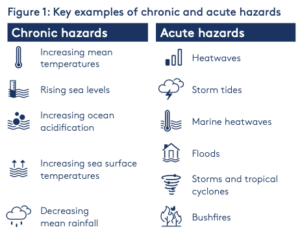
Five questions have been provided to guide directors’ discussions:
- What is our process for integrating the latest climate knowledge into our strategies and risk management?
- What process do we need to undertake robust scenario analysis?
- What scientific assumptions are underlying our transition plan?
- How is the board and management team upskilling themselves on the physical risks and their material implications for our business?
- What expertise do we need internally or to access externally to support us?
Kelp needs help
Kelp, of which there are over a hundred species, are big brown forms of seaweed that grow in cold nutrient-rich waters, including the southern half of Australia’s coastline. Like all seaweeds, they contain chlorophyll and use photosynthesis to convert CO2 and water into sugars and oxygen. But kelp aren’t plants; they are algae.
Kelp forests occupy shallow coastal areas along more than a quarter of the world’s coastlines. They cover an area about the size of the Amazon rainforest and just like land forests they have a canopy layer (of ‘blades’ just below the surface), a trunk (or ‘stipe’) and an understory where the ‘holdfast’ attaches to the seafloor. Kelp forests provide homes and food for an incredible range of species, with each layer constituting a distinct ecosystem.
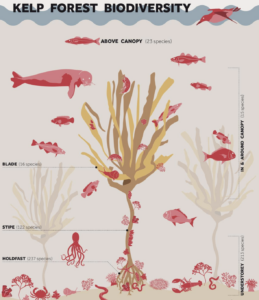
Kelp forests are enormously important for the planet and for people. They capture carbon, reduce ocean acidification, remove nutrient pollution from the water, dampen the force of waves, provide nurseries for many marine organisms, feed humans and farmed fish, support local economies and contribute to the identity of coastal communities. Unfortunately, over the last 50 years about half of kelp forests have been damaged by climate change, poor water quality, invasive species and overharvesting. A lack of any global policy or legal instruments focused on kelp has contributed to little attention being paid generally to kelp governance and protection.
The United Nations Environment Program is seeking to remedy the situation with a suite of proposals to increase our knowledge and awareness of kelp (more mapping, monitoring, research and data sharing, for instance), develop a toolbox of management interventions to protect and promote the growth of kelp forests, and increase international cooperation.
Queen and King of Sustainability
It’s good to know that the recently crowned, erstwhile Aussie, Queen is a champion of sustainability according to an article in the Sydney Morning Herald on 10 January:
Sustainability
One area where Mary is a fashion leader, along with Britain’s Princess Anne, is in keeping favourite outfits on rotation. At New Year celebrations last week, Mary wore a velvet gown by Birgit Hallstein seen at events in 2007, 2014 and 2020, and in her official portrait in 2015.’
I have a very similar approach to my wardrobe, don’t you know. Take the t-shirt I’m wearing today. It was also seen in public last Tuesday and the Thursday before that. And the week before that I wore it on Monday, washed it on Wednesday and wore it again on Friday.
Just like Mary, people take note of and often comment on my finery: ‘Is that really an original Vinnies design?’ or ‘Why have you got an AK47 design on your t-shirt?’ (because it’s black and the colours of all the less violent items faded the first time I washed it, if you must know).
Anyway, good to know Queen Mary will be doing her bit for the environment. With luck, we’ll see that velvet gown again in about 2030.
New tricks for old blades
Approximately 85% of a wind turbine can be recycled. The most difficult component is the epoxy-coated, fibreglass blade which contains no valuable metals or minerals and is difficult to crush. The quest is on to find new uses that avoid destination-landfill and reduce greenhouse gas emissions. Can’t say that I’m keen on the bridge but I like the bike rack and playground.

